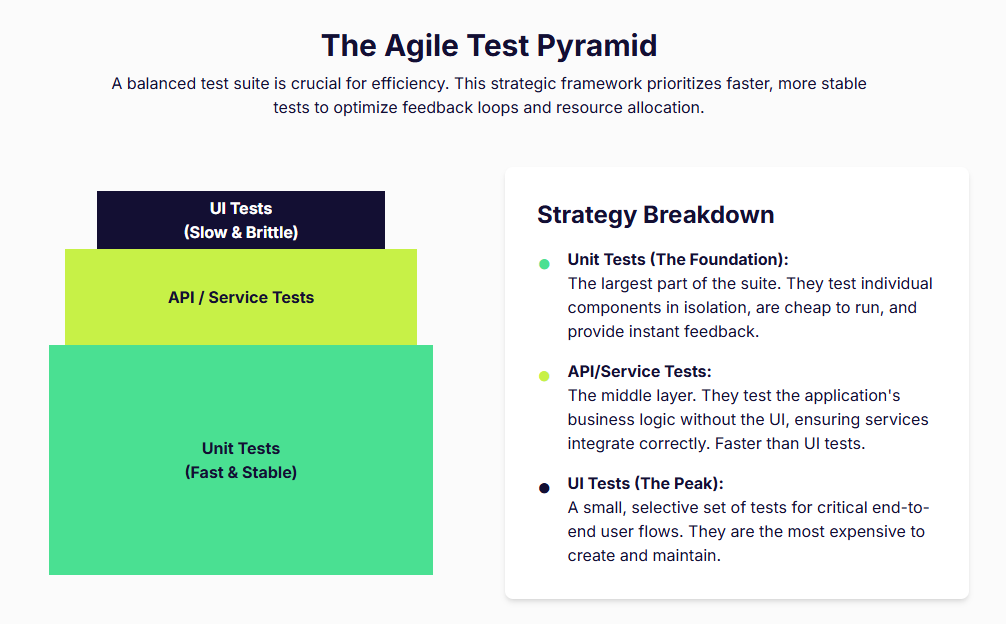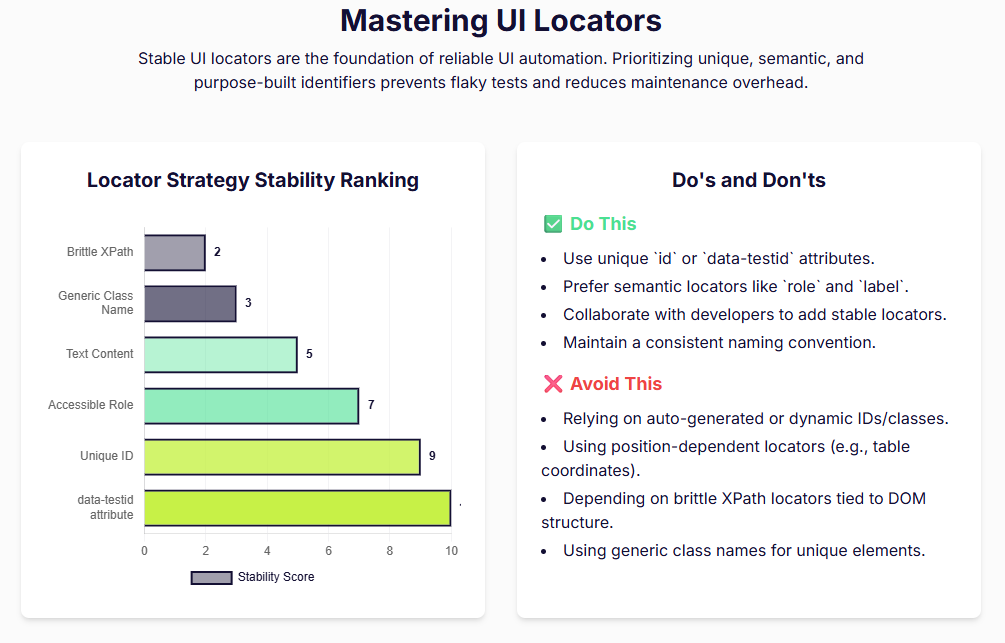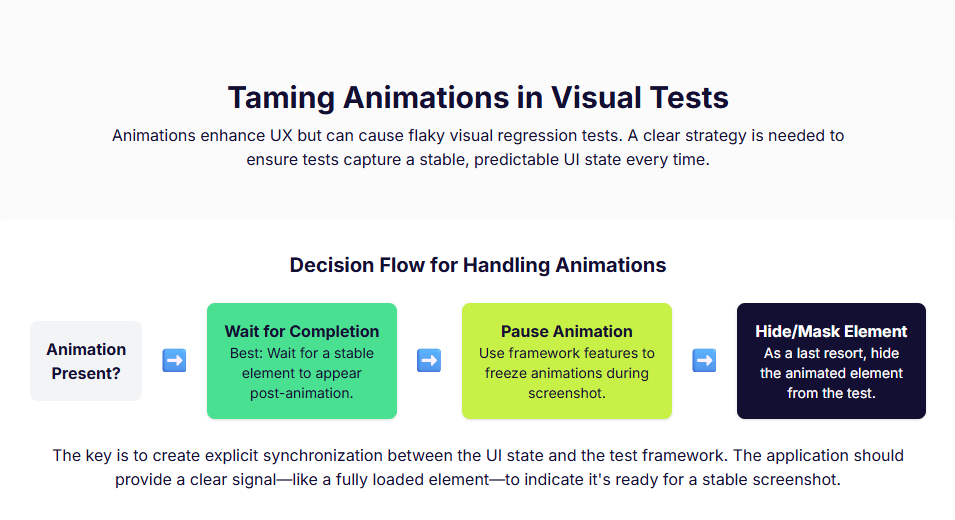Blueprint for Brilliance: 5 Critical Steps to Engineer Automation-Ready Mobile Apps

As 86% of people spend more time on mobile apps than on websites today, a flawless user experience isn’t just a goal; it’s the only path to survival. The mobile app testing market, projected to grow from $6.36 billion in 2024 to $17.16 billion by 2030, reflects the massive investment organizations are making to get this right.
Within this landscape, the strategic shift is clear: automated testing already comprises over 40% of mobile app testing services and is expected to surpass 55% by 2033. The stakes for getting it right have never been higher. A staggering 70% of users abandon apps due to slow loading times, and with crashes being responsible for 70% of all uninstallations, there is virtually no margin for error.
To win, teams must stop treating quality assurance as a final hurdle and start embedding it into the very DNA of their applications. This approach, centered on strategic mobile testing automation, is the key to delivering the quality users demand at the speed the market requires.
By designing for automated testing from day one, you build a foundation for continuous, reliable feedback that accelerates bug detection and transforms the test automation of mobile apps from a challenge into your greatest competitive advantage. This article is your blueprint for achieving that, detailing the core best practices for the modern testing of mobile applications.

Digital Fingerprints: Mastering Element Identification for Mobile Automated Testing
Think of your automation script as a detective and UI elements as its key witnesses. If the detective can’t reliably identify a witness every single time, the entire case falls apart. The same is true for mobile automated testing. Stable UI element locators are the foundational bedrock of reliable automation. Without them, even minor UI changes can cause your tests to fail, leading to endless maintenance and eroding confidence in your automation suite.
Your North Star: Why Unique and Accessibility IDs Reign Supreme
Developers should make unique Accessibility IDs the gold standard for identifying elements. A truly unique Accessibility ID acts like a permanent address, making your automation tests independent of the app’s underlying structure and therefore far more resilient. For cross-platform test automation of mobile apps, accessibility IDs are the most reliable locators you can use. They work consistently across both iOS and Android, which makes them perfect for crafting robust, reusable automation scripts. Additionally, by utilizing Accessibility IDs, you are ensuring that users who have visual impairments can use your applications with ease – whether your developers realize or not this may also be a compliance issue.
The Architectural Sin of Deep Nesting
Developers must avoid the temptation to deeply nest interactive elements. This common practice creates a tangled web that complicates automation and severely hinders accessibility. Both screen readers and automation tools struggle to navigate nested interactive controls. For example, if you place a clickable link inside a button, assistive technologies will often ignore the inner link because the parent button is the only focusable item. This makes the child element effectively invisible to both users who rely on assistive tech and your automation scripts.
Clarity and Consistency: The Golden Rules of Naming
Every single interactive element needs a unique, descriptive identifier. More importantly, you must ensure these IDs remain consistent across all future app versions. This discipline ensures that your automation scripts don’t break every time you release an update. Adopting a consistent naming convention for locators helps your entire team easily locate and interact with elements, creating a smoother workflow for everyone involved in the testing of mobile applications.
Choreographing the Code: Ensuring Predictable UI Behavior
A predictable UI is a testable UI. When your application behaves consistently, your automation scripts can execute their tasks with precision. However, when elements shift, disappear, or load erratically, it introduces chaos that even the most well-written test script cannot handle. You must engineer predictability into your application’s design to build a truly effective mobile testing automation framework. It is the only way to ensure your tests are stable, reliable, and meaningful.
Follow the Leader: The Power of Consistent Navigation
Your development team should use standard navigation components and interaction patterns whenever possible. Automation tools are designed to recognize and interact with these standard components easily. By sticking to established patterns, you create a logical and intuitive user flow that is just as easy for a script to follow as it is for a human. This simple discipline removes a significant layer of complexity from the test automation of mobile apps.
Standing on Solid Ground: Why Element Stability Is Non-Negotiable
Your app’s elements must maintain consistent positioning and attributes from one test run to the next. Avoid dynamic layout changes that might cause automation scripts to fail because they can no longer find what they’re looking for. It is especially critical that you do not use locators derived from an element’s on-screen position, as any minor layout adjustment will break these tests instantly. Instead, always tie locators to the inherent data or logical function of the element itself.
Taming the Flow: How to Handle Dynamic Content
When your app loads content dynamically, it must provide clear indicators that automation can detect. These signals tell the test script precisely when the page is fully rendered and ready for interaction. Elements that change frequently, like timestamps or ads, are notorious for introducing flakiness into tests. You can manage this instability by implementing strategies to hide these dynamic elements during screenshots or by controlling their state directly within the test environment.

Taming the Motion: Strategies for Handling Animations in Test Automation
Animations create a dynamic and engaging user experience, but they can be a nightmare for automation. They are a primary cause of flaky tests, especially in visual regression testing where pixel-perfect comparisons are key. When your script captures a screenshot mid-animation, it will almost certainly fail the comparison against a baseline image, even if no real bug exists. This constant stream of false positives undermines the reliability of your entire mobile automated testing effort. To conquer this, you must give your application a way to tell your tests when to stand by and when to act.
The Flicker of Failure: Why Animations Cause Chaos
Visual regression testing works by comparing a baseline screenshot with a current one to detect unintended changes. This process demands a stable and static UI. Animations, by their very nature, create a transient state. Capturing an image while an element is fading, sliding, or resizing will inevitably lead to a failed test because the visual state is different from the baseline. These flaky tests create significant maintenance overhead and erode your team’s confidence in the automation suite.
Signaling Stillness: How to Wait for the Perfect Shot
You can eliminate animation-induced flakiness by implementing explicit synchronization mechanisms. The most straightforward approach is to ensure animations have fully completed before your test proceeds to the next step or captures a screenshot. Your team can achieve this in a few ways:
- Wait for a Stable Element: A robust method involves waiting for a specific, non-animated element on the subsequent screen to become visible. You can configure this element to load only after the animation sequence has concluded, providing a reliable signal that the UI is static and ready for validation.
- Use Completion Handlers: Many animation APIs and CSS event listeners offer completion handlers (like “animationend”) that execute a function once the animation finishes. Your test scripts can hook into these events to trigger the screenshot capture at the perfect moment.
- Provide a “Disable” Switch: For maximum control, you can include options to disable or reduce animations specifically within your test environments. This ensures a consistent visual state for every single test run.

Building with Blocks: The Power of Modular Design in Mobile Testing Automation
A strong architectural foundation makes every aspect of development easier, and this is especially true for the testing of mobile applications. While many complex design patterns exist, one simple principle delivers an enormous return on investment for automation: modularity. When you build your application from small, independent, and reusable components, you create a structure that is inherently easier to test and maintain.
Isolate and Conquer: How Modularity Simplifies Testing
A modular design allows your team to test individual components in isolation. This is a massive advantage. Instead of needing to navigate through multiple screens and complex setups to validate a single piece of functionality, you can write focused tests that target a singular component. This approach makes your automation scripts simpler, faster, and far more reliable. If a change in one module breaks its dedicated tests, you know exactly where the problem lies without having to debug a massive, end-to-end test failure. This practice of actively breaking the application into small, reusable modules is a cornerstone of building testable software.
The Sterile Lab: Mastering the Environment for Test Automation of Mobile Apps
Your testing environment is the laboratory where you validate your application’s quality. If the lab is contaminated or inconsistent, your experimental results—your test outcomes—will be worthless. To achieve reliable results from the test automation of mobile apps, you must exert precise control over every aspect of the testing environment, from the server it runs on to the data it consumes.
A Room of One’s Own: The Case for Dedicated Environments
Your team must maintain dedicated environments exclusively for automated testing. This is non-negotiable. Running automated tests in the same space as manual testing or active development work creates conflicts and instability that will inevitably lead to false negatives. A separate, clean environment ensures that your test results are based on the code being tested, not on some random interference from other activities.
Feeding the Machine: Smart Data Management
You must implement clear strategies for managing test data so it doesn’t interfere with your automation scripts. The cardinal rule is to avoid hardcoded values in your tests. Instead, use parameterized data inputs, which allow you to run the same test with different data sets, making your scripts far more flexible and powerful. For apps with dynamic content, use stable data fixtures or mock your network requests to ensure the data displayed in the application is identical for every test run.
The Device Matrix: Conquering Configuration Chaos
A critical part of the testing of mobile applications is ensuring your app works flawlessly across a vast landscape of device configurations, screen sizes, and operating systems. Verifying this consistency is a monumental task. To manage this chaos, you should standardize your test execution within a CI/CD pipeline. This ensures that every test runs under the exact same conditions, which is crucial for achieving stable and repeatable results that build confidence in your automation suite.
From Blueprint to Brilliance: Your Path to Automation Excellence
Building an automation-friendly application is not a matter of chance; it is a deliberate act of architectural precision. When you commit to this blueprint, you fundamentally shift your team’s capabilities. You empower them to move faster, catch bugs earlier, and release products with unshakable confidence. By forging stable element IDs, engineering predictable UI behavior, taming erratic animations, embracing modular design, and mastering your testing environment, you create a virtuous cycle of quality and speed. These practices are the pillars of modern mobile testing automation.
Adhering to these best practices is the most important step, and equipping your team with the right platform can dramatically accelerate your journey.
This is where Qyrus comes in.
Qyrus provides a comprehensive mobile testing platform built for teams that prioritize quality and efficiency. It is designed to support the very best practices detailed here. While you focus on building a testable app, Qyrus provides a powerful toolkit to execute your automation strategy at scale.
To conquer the immense challenge of device fragmentation, Qyrus offers a robust, real Device Farm. This approach is a proven, mainstream strategy for success, with real device cloud testing already accounting for 22% of the testing services market. With Qyrus, you can instantly validate your app’s consistency across a vast matrix of real device configurations, screen sizes, and operating systems, ensuring your application delivers a flawless experience for every user, everywhere.
Stop wrestling with unstable scripts and endless device maintenance. Elevate your test automation of mobile apps and start building with brilliance.
Book a demo today to discover how the Qyrus Mobile Testing platform and its extensive Device Farm can help you implement these best practices and achieve seamless, reliable automation today.




